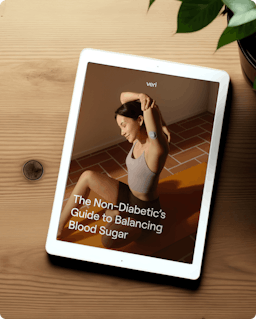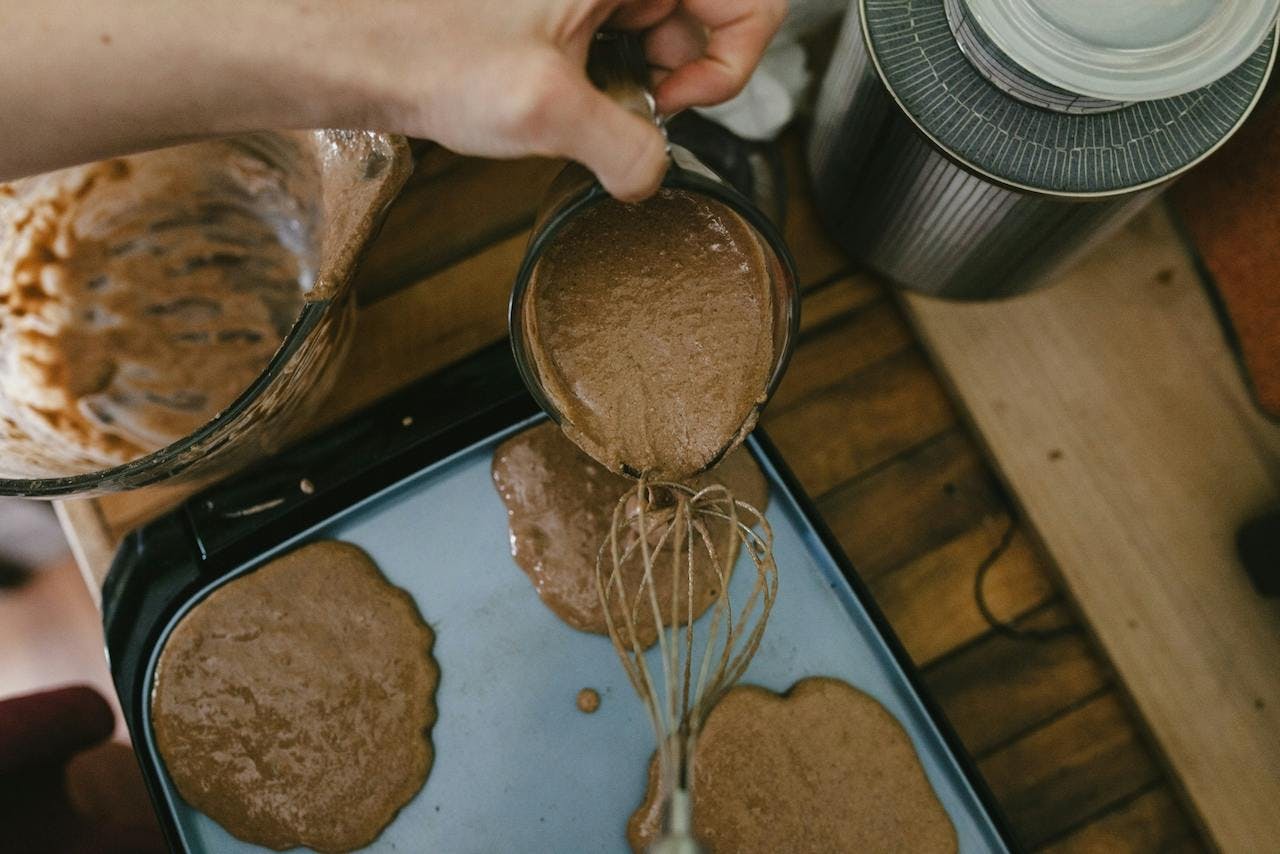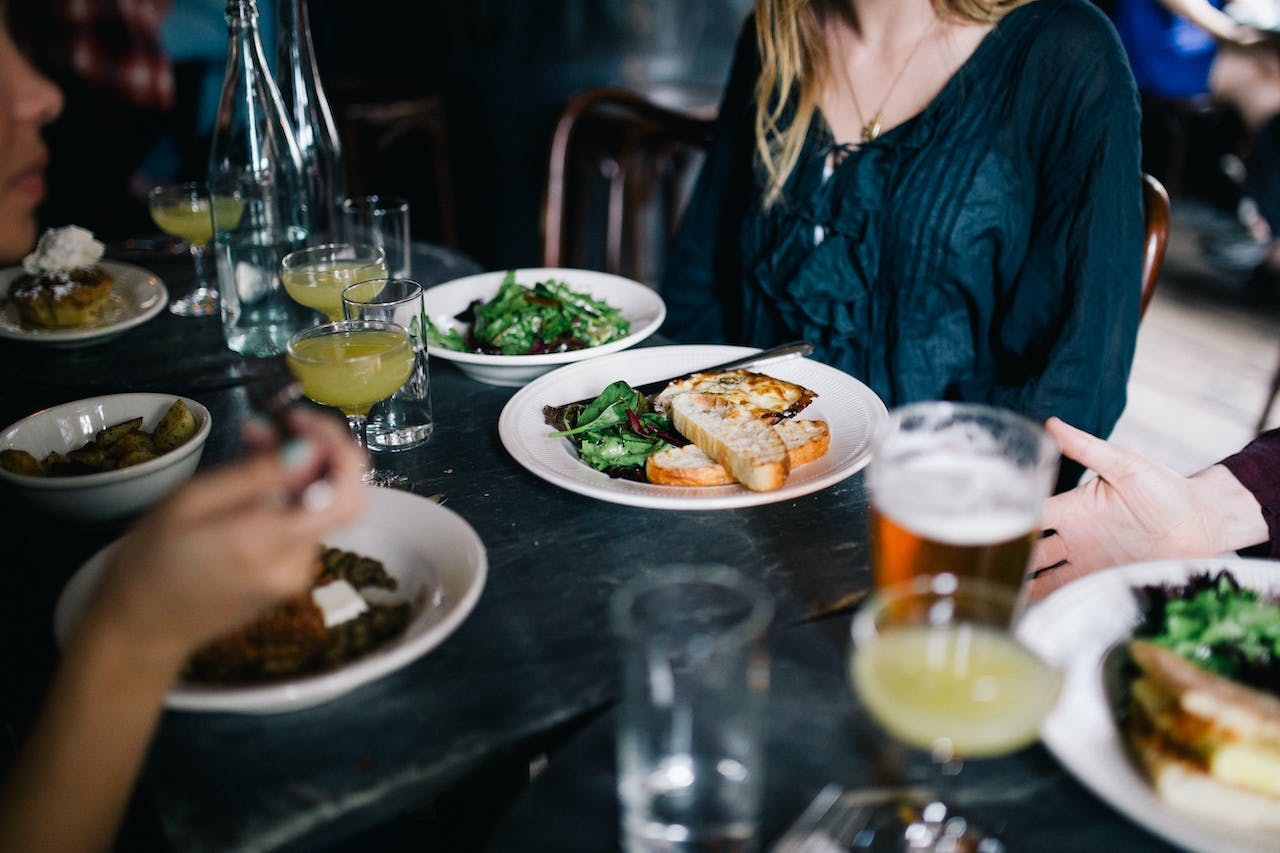Cooking on weeknights can be a challenge for anyone with a busy schedule, but the alternatives — takeout, frozen meals, and processed foods — aren’t always nutritious or metabolically friendly. And if you’re trying to incorporate more fiber-rich vegetables, lean proteins, and healthy fats into your diet, you may feel like you need to spend hours in the kitchen just to make flavorful, glucose-friendly meals. Thankfully, there are plenty of ways to make dinners that are metabolically friendly, nourishing, and budget-friendly, with minimal prep and clean-up.
Why these recipes can help reverse insulin resistance
Nutrition is the most important lever for reversing insulin resistance, stabilizing glucose levels, and improving metabolic health at large. What you eat directly impacts the five clinical markers of metabolic health (waist circumference, fasting blood glucose, blood pressure, triglycerides, and cholesterol) as well as your glucose variability, which can help you understand where you fall on the metabolic spectrum.
A key part of a metabolically healthy diet is minimizing refined, ultra-processed foods and sugar, and eating more of these food groups:
- Colorful, antioxidant-rich fruits and vegetables
- Fiber (from complex carbohydrates, fruits, and vegetables)
- Lean proteins (like chicken, fish, and turkey)
- Healthy fats (especially olive oil, avocados, and nuts/seeds)
According to research, some foods — like fresh berries, lentils, sardines, and avocados — are particularly good at helping stabilize glucose levels and improve insulin sensitivity, while others (breakfast cereals, french fries, oat milk, and sugar-free sodas) can trigger glucose spikes that, over time, can lead to insulin resistance and glucose dysregulation.
Ultimately, there are no hard-and-fast rules as to what and how you should eat for metabolic health, and finding what works best for you tends to boil down to personal experimentation and using tools like a CGM to help you understand how specific ingredients affect your glucose levels.
The recipes below are grounded in these principles of metabolically healthy eating, but give you wiggle room to substitute ingredients based on what you have on hand as well as your specific health goals. They also aim to minimize the use of pots and pans and hands-on cooking time so you can realistically make them after a busy day.
1. Sheet-pan fish with vegetables
This recipe uses a technique called “en papillote,” which is French for “in a paper wrapper” — though you can use foil here if that’s what you have on hand [1]. Basically, you’re making individual packets of fish and vegetables that gently steam in the oven, resulting in an easy single-sheet-pan meal with minimal clean-up after.
Estimated time: 35 minutes
Servings: 2
Ingredients:
- 1 lb (450 g) of a sturdy fish (salmon, cod, trout, or halibut), divided into 2 portions
- 1 zucchini, sliced into ⅛-in (3 mm) rounds (can replace with ~1 c or 250 mL of raw spinach or sliced bok choy)
- 1 lemon, thinly sliced
- 2-3 cloves of garlic, thinly sliced
- A handful of your favorite herbs, such as dill or thyme
- Kimchi or sauerkraut or another pickled vegetable
- 1 cup (250 mL) of cherry tomatoes, halved (optional)
- 1-2 shallots, thinly sliced (optional)
- Extra-virgin olive oil
- Salt and pepper
Steps:
- Preheat your oven to 400-F or 200-C.
- Trim a piece of parchment paper or aluminum foil to ~12” x 15” (~30 cm x 38 cm) and fold it in half to form a crease. Unfold it.
- On one side of the crease, place half of the zucchini slices (or bok choy or spinach, if using those instead) in an overlapping pattern to form a circular “bed” for your fish, leaving a generous 2-3” (5-8 cm) margin of parchment paper on all sides. Season with salt and pepper.
- Place one portion of fish on top of the zucchini slices, then the cherry tomato halves on top of the fish.
- Drizzle with extra-virgin olive oil and season with salt and pepper.
- Place half of your shallot slices, garlic slices, and herbs on top of the fish. Layer 2-3 lemon slices on top of everything.
- Fold the parchment paper or aluminum foil in half again to enclose the fish. If using foil, leave a few gaps to allow the fish to “breathe.” If using parchment paper, start at the bottom-left corner of the packet and make “crimps” along the edge [2]. Continue until you’ve completely sealed the fish (the final paper packet should almost look like an empanada).
- Repeat steps 2-7 with the remaining portion of fish, and place both packets on a baking sheet.
- Bake the fish for 14-18 minutes.
- Serve with kimchi/sauerkraut/pickled vegetables and a side of cooked-and-cooled rice or whole-grain bread. Top with toasted nuts or avocado for additional healthy fats, if desired.
Tip: If you want more greens, you can roast your favorite fiber-rich vegetable, like broccoli, Brussels sprouts, asparagus, or green beans, on a separate baking sheet at the same time your fish is in the oven.
Why is this metabolically friendly?
This meal contains fiber-rich zucchini (which can blunt glucose spikes) as well as lean protein and omega-3 fatty acids from the fish, which is a critical micronutrient for cardiometabolic health. Olive oil, one of the central parts of the Mediterranean diet, contains compounds and phenols that can counter inflammation, which is associated with insulin resistance. The meal also provides a probiotic boost from the kimchi/kraut, which can help populate your microbiome with gut-friendly bacteria that help regulate glucose levels.
2. Slow cooker Mediterranean-style chicken stew
You can make large batches of this recipe and eat them throughout the week with different sides — like whole-grain bread or seedy crackers — or freeze portions to heat up in a sauce pan when you’re craving a hearty stew.
Estimated time: 6.5 hours
Servings: 4
Ingredients:
- 1.5 lb (680 g) boneless skinless chicken breasts or thighs, cubed
- ½ a medium yellow onion, diced
- 2-3 garlic cloves, minced
- 1.5 cups (3.5 dL) kabocha squash, acorn squash, delicata squash, or sweet potato, diced
- 1 carrot, cut into ¼ in rounds
- 1 red, orange, or yellow bell pepper
- 2 stalks celery, sliced
- 2 cups low-sodium chicken broth
- 15 oz (430 g) can tomato puree or whole tomatoes
- 1 cup (2.33 dL) frozen peas (optional)
- ½ tsp (2.5 mL) salt
- ½ tsp (2.5 mL) pepper
- Extra-virgin olive oil
- Herbs and spices (you can pick and choose from these, based on preference): 1 bay leaf, ½-1 tsp (2.5-5 mL) paprika, ½-1 tsp dried thyme (2.5-5 mL, or 2 sprigs fresh thyme), ½-1 tsp dried rosemary (2.5-5 mL, or 2 springs fresh rosemary)
Steps:
- In a slow cooker, add all the ingredients together except for the frozen peas (if using).
- Mix ingredients together.
- Cook on low for ~6 hours or on high for ~3 hours, if you don’t have time.
- Stir in frozen peas at the end, season to taste, and drizzle with extra-virgin olive oil before serving.
Why is this metabolically friendly?
Instead of starchy potatoes, which are high-glycemic and can spike blood glucose, this Mediterranean-inspired chicken stew is hearty and rich in vegetables like carrots, bell peppers, tomatoes, squash, and peas, which provide fiber that nourishes good bacteria in your gut that can help with glucose regulation. Additionally, these are all colorful vegetables that contain antioxidants, phenols, and other beneficial compounds that may support cardiometabolic health. The chicken also provides lean protein, which will keep you feeling full and blunt the absorption of carbohydrates into the bloodstream, minimizing a glucose spike.
3. Kale and farro salad with chickpeas and goat cheese
This flavorful salad is filling enough to stand alone as its own meal, but you can also divide it into smaller side salads throughout the week. Since kale is a sturdy, fibrous green, this salad will keep well in the fridge for up to 3 days — particularly convenient for busy weeks. Feel free to add other vegetables you like, such as bell peppers and cucumbers, to the salad, but stick to greens like chard or kale if you plan on having leftovers (alternatives like arugula and spinach are more delicate and won’t hold up well overnight).
Estimated time: 45 minutes
Servings: 4
Ingredients:
- 1 cup (2⅓ dL) uncooked farro
- 1 bunch kale, deribbed and chopped/torn into small pieces
- 15 oz (430 g) can chickpeas, drained and rinsed
- ½ cup (1⅛ dL) sliced almonds (raw or toasted)
- Goat cheese or feta cheese crumbles (to taste)
- Sardines or rotisserie chicken, shredded (optional)
- Extra-virgin olive oil
- Salt and pepper to taste
- Vinaigrette: 5 tbsp (75 mL) extra-virgin olive oil, 2 tbsp (30 mL) lemon juice, 2 tsp (10 mL) vinegar, 1 tbsp (15 mL) Dijon mustard, ¼ tsp (~1 mL) salt, 1 clove pressed garlic
Steps:
- Bring at least 3 cups (720 g) of water to a boil in a medium saucepan.
- Preheat oven to 425-F or 220-C.
- On a baking sheet lined with parchment paper, pat drained and rinsed chickpeas dry with a towel or paper towels. Drizzle with extra-virgin olive oil and season with salt and pepper to taste. Place in preheated oven and roast for 20-30 minutes, until crisp. Let cool.
- When the water reaches a boil, add the farro and a generous pinch of salt. Stir and reduce the heat to low. Simmer for ~30 min until the farro is tender. Drain any excess water. Let cool.
- While the chickpeas and farro are cooking, whisk all vinaigrette ingredients together in a small bowl or shake them together in a tightly sealed jar.
- Add deribbed and chopped kale to a large mixing bowl and massage half of the vinaigrette into the leaves to make them less bitter (~1-2 minutes).
- Add cooled farro and chickpeas, sliced almonds, goat/feta cheese crumbles, and sardines or rotisserie chicken (if using). Toss with the remainder of the vinaigrette and adjust seasoning to taste.
Why is this metabolically friendly?
Farro, also known as emmer wheat, is a low-glycemic whole grain that won’t cause your glucose levels to spike. It’s also a great source of complex carbohydrates, fiber, plant-based protein, iron, and magnesium [3]. Similarly, the chickpeas (a legume) are loaded with fiber — a ¼ cup of chickpeas (~113 g), which is 1 serving in this recipe, contains 8 g of fiber (33% of the daily recommended intake for women under 50, and 21% for men under 50). The raw kale in this recipe provides vitamins A, C, and K, which can help reduce blood pressure and risk of cardiovascular disease [4, 5]. The extra-virgin olive oil also provides anti-inflammatory mono- and polyunsaturated fats, which can improve glucose metabolism [6].
4. Vegetable egg scramble (breakfast for dinner)
Estimated time: 30 minutes
Servings: 2
Ingredients:
- 1-2 scallions, thinly sliced
- 1 small russet potato or sweet potato, thinly sliced or grated (like a hashbrown texture)
- 2.5 cups (6 dL) of vegetables, thinly sliced (you can use zucchini, onions, broccolini, mushrooms, bell peppers, Brussels sprouts, cauliflower, or even leftover cooked vegetables that you have on hand)
- 1 tsp (5 mL) chives, minced
- ½ tsp (2.5 mL) dill, minced (optional)
- 4 large eggs, beaten
- 2 oz (56 g) spinach
- 1 tbsp (15 mL) + 1 tsp (5 mL) extra-virgin olive oil
- Salt and pepper to taste
- Goat cheese crumbles or cheddar cheese, grated (optional)
Steps:
- Heat a large nonstick skillet over medium heat.
- Add 1 tbsp of extra-virgin olive oil and wait a moment for it to heat up. Then add vegetables (not including spinach) and half of your scallions.
- Season with salt and pepper to taste. Stir and let the vegetables cook for about 8 minutes, until lightly browned and cooked through.
- Turn the heat down to medium-low. Push the vegetables to one side of the pan, add 1 tsp of extra-virgin olive oil, then pour the beaten eggs into the empty side of the pan. Sprinkle in the remaining scallions, cheese (if using), and season with salt and pepper. Stir and scramble the eggs for about 2-3 minutes.
- Add spinach and herbs to the skillet, and mix everything together to combine.
Why is this metabolically friendly?
Eggs are a nutrient powerhouse — they contain every vitamin except for vitamin C, and are a rich source of phosphorous, calcium, choline, and protein (approximately 7 g per large egg) [7, 8]. The protein content of this meal can help you feel sated, and the vegetables provide fiber, antioxidants, and micronutrients to help stabilize your glucose levels. If you’re trying to minimize your carbohydrate intake, you can leave out the potatoes or sweet potatoes. If you’re eating this before an intense workout (like HIIT) and want to make sure you have immediate circulating glucose for your muscles, you can eat the scramble with a piece of whole-grain toast, some quinoa, or a small portion of cooked-and-cooled rice.
While eggs were once vilified for their association with increased cholesterol and potential consequences for cardiometabolic health, recent research has found that eating eggs themselves don’t necessarily increase your risk of heart health issues [9]. The key is to avoid eating eggs as part of a Western diet high in processed foods and refined sugar. When you eat eggs in the context of a metabolically healthy diet and lifestyle, they can be an affordable and nutrient-rich staple to help you achieve your health goals.
References:
- https://www.thespruceeats.com/en-papillote-culinary-term-definition-995657
- https://www.seriouseats.com/how-to-cook-food-en-papillote-packages-vegetables-meat-fish-slideshow
- https://www.webmd.com/diet/health-benefits-farro
- https://pubmed.ncbi.nlm.nih.gov/32091599/
- https://journals.sagepub.com/doi/full/10.1177/2048004016661435
- https://www.ncbi.nlm.nih.gov/pmc/articles/PMC5436092/#sup1
- https://www.ncbi.nlm.nih.gov/pmc/articles/PMC6470839/
- https://fdc.nal.usda.gov/fdc-app.html#/food-details/171287/nutrients
- https://www.amjmed.com/article/S0002-9343(20)30549-0/fulltext



